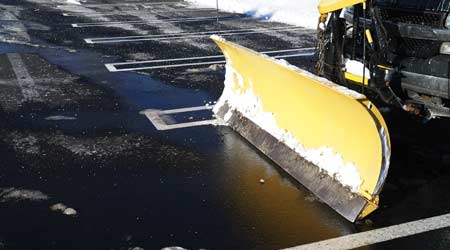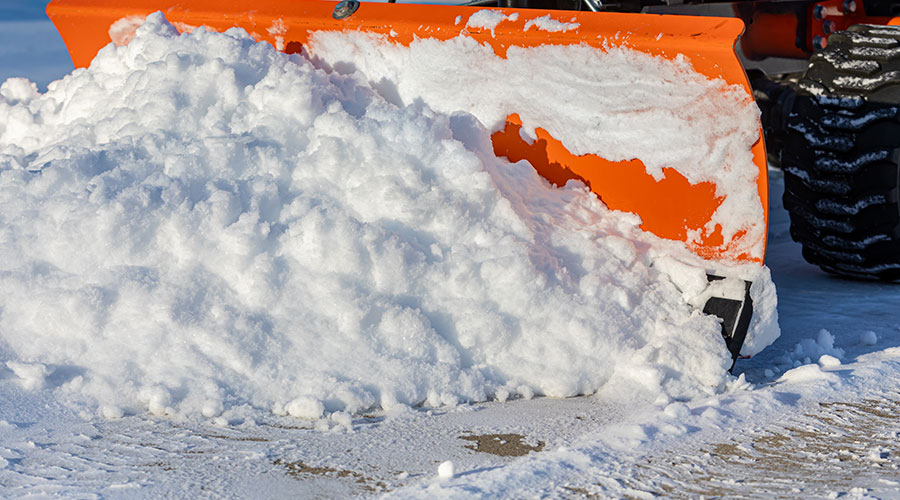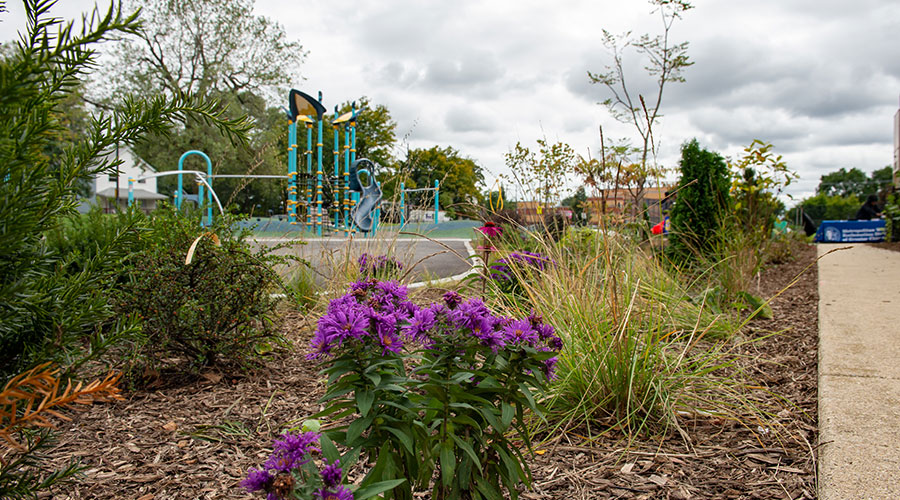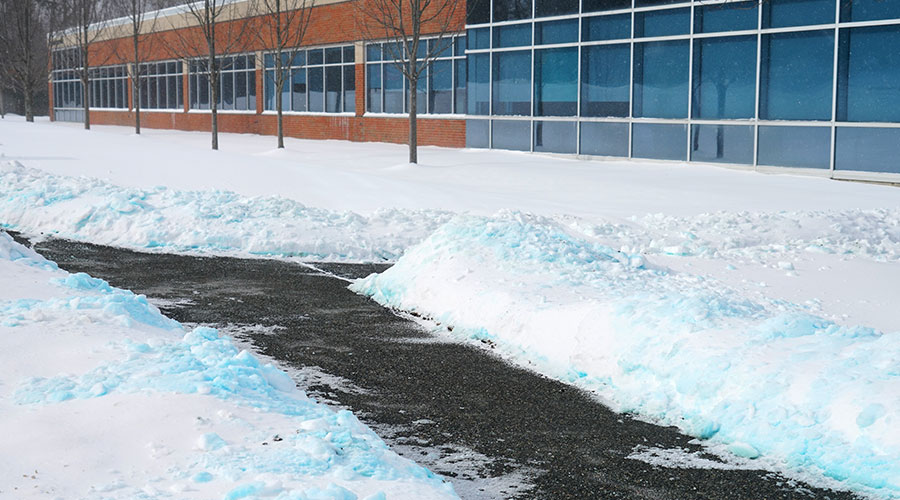 Combatting snow and ice management often involves a combination of sustainable anti-icing pretreatment and smart equipment deployment.
Combatting snow and ice management often involves a combination of sustainable anti-icing pretreatment and smart equipment deployment.Sustainable Deicer Strategies for Snow and Ice Management
Focusing on bond prevention, using deicer chemicals and implementing best practices can keep surfaces clear
Preventing snow and ice from bonding to a paved surface is much more efficient than trying to manage precipitation after it has begun to bond to a surface. From a sustainability and risk standpoint, a policy of bond prevention is critical and will drive a manager’s subsequent decisions on deicer specification and application.
Managers can use these best practices for written policy recommendations to develop or update a program of sustainable salt use:
• Prevent snow and ice from bonding to driving and walking surfaces. Prioritize anti-icing techniques as standard practice.
• Do not relocate or dump snow into bodies of water, including lakes, ponds, rivers, streams, oceans, wetlands and stormwater management ponds.
• Spot-treat traditional problem areas, such as paved surfaces facing north.
• Monitor and document refreeze-related risks caused by damaged or faulty infrastructure components — such as broken downspouts or clogged drains — to reduce the need for additional deicing applications.
• Optimize salt use with techniques such as blending and pretreating in order to accelerate deicing and lower the effective temperature of the salt.
• Define the anti-icing process in a snow-response plan, and implement it as a standard operating procedure. Training should include specific weather scenarios — such as heavy rain — in which anti-icing might be ineffective.
• Set policy standards for scheduling the calibration of equipment, including pre-season and anytime a change is made to a piece of equipment.
• Standardize the process to measure salt output per event and per location.
Starting with these core policies and getting buy-in from all decision makers and stakeholders are important steps. A full list of best practices is available in the free Best Practices for Sustainable Salt Use from the Snow and Ice Management Association at www.sima.org/bestpractices.
The policy-methodology link
As a department’s overall policies for snow and ice management take shape, the central challenge becomes connecting them to the way managers and crews address and respond to precipitation. Managers have several strategies at their disposal at this stage, including:
• mechanical removal of snow and ice using plowing, brooming and blowing
• deicing with a chemical that crews typically applied after mechanical removal
• anti-icing and bond prevention with a deicer chemical.
The application of these strategies might change due to many conditions, but overall, a policy of anti-icing and bond prevention will enable managers to deploy the most effective tools and training to potentially use less deicer over time while still maintaining the required conditions on paved surfaces.
Managers moving their departments in the direction of using anti-icing as a central strategy for their facilities need to consider a number of options:
Anti-icing with a solid or treated solid. A recommended best practice for getting into anti-icing is to leverage the material crews already use for regular deicing. Solids treated with a liquid long before an application often can mitigate bond formation at lower surface temperatures than can be achieved with straight rock salt. Compared to deicing with a solid material after precipitation falls, this strategy can provide significant bond prevention and use less deicer.
Pre-wetting a solid material. Coating solid materials with liquid to increase effectiveness directly before application is also an effective strategy that can yield better results and use less overall product.
Direct liquid application. Applying a liquid deicer directly to a surface — commonly referred to as pre-treatment — can be the most efficient method of bond prevention, but it requires a great deal of training and the proper equipment to perform well. This strategy should be a goal for key priority areas of a site.
Related Topics:















